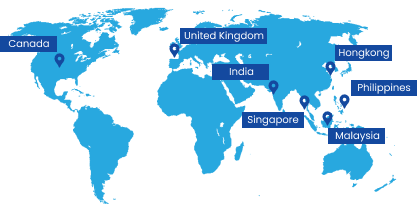The Ultimate Goal of SEMContinuously Increasing Conversion Rates
As a Google Partner, our SEM services are renowned for delivering exceptional lead generation results and unparalleled customer service. If you are seeking transparency, competitive management fees, no long-term contracts, and an impressive return on investment, then you’ve come to the right place.
Our job is to eliminate waste and increase conversion rates!


How Can Our SEM Team Help Your Business?
Whether you know where your customers are or not, our SEM experts can quickly and effectively help your business reach these potential customers in the market using SEM. Each search represents an opportunity to influence the decisions and preferences of your target customers. Let our experts help position your business to achieve sales and acquire new customers online.
If you are not quite satisfied with your current SEM Agent, give us a chance to earn your business.
The Data Behind Our SEM Success

Market Share
Weekly

Online Purchase
Google Handle Daily

Searches
Trusted Online Adv

Clients
Google Adv Average Budget

HKD
Why is Our SEM So Precise?

1
Understand Your Business
First, we start by understanding your target audience and buyer personas. Who are they? What motivates them? Why should they choose you over your competitors? What sets you apart?

2
Identify Finance Goal
We ask: What is your current customer acquisition cost? What are your revenue goals? What is your current market share, and how can we start on the path to market dominance?

4
Analysis Current Activities
We conduct a comprehensive analysis of all data and metrics to identify what is working well and what is causing waste.

5
Create a Successful Plan
We focus on the entire visitor journey, from pre-click to post-click, while utilizing tracking technology to attribute revenue to specific factors such as keywords, ad copy, landing pages, time of day, and channels.
1. Understanding Your Business and Target Audience is Key
Defining Your Target Audience:
Research Your Ideal Customers: Analyze who is most attracted to your products or services. This could include age, gender, geographic location, interests, and lifestyle. - Understand Their Behaviors and Needs: Explore their online behavior patterns, such as the types of websites they frequently visit, their shopping habits, etc.
Creating Buyer Personas:
- Develop Detailed Buyer Persona Profiles: Combine market research and data analysis to create fictional personas representing your ideal customers. This should include their basic demographics, interests, challenges, and goals. - Understand Motivations and Pain Points: Identify what motivates them and the problems they may face. This will help you tailor more effective marketing messages.
Competitive Advantage Analysis:
- Identify What Sets You Apart from Competitors: Highlight what makes your product or service unique compared to competitors. This could be in terms of price, quality, customer service, or any specific selling point. - Analyze Why Customers Should Choose You: Focus on the unique value and solutions you can offer and how these meet the needs and expectations of your target audience.
2. Creating Financial Goals
Analyzing Customer Acquisition Cost (CAC):
- Calculate Current CAC: This is the average cost incurred to acquire a new customer. Divide your total marketing and sales expenses by the number of new customers acquired in a specific period. - Assess the Relationship between CAC and Customer Lifetime Value: Ensure that your customer acquisition cost does not exceed a reasonable proportion of the customer's lifetime value.
Setting Revenue Targets:
- Determine Short-Term and Long-Term Revenue Goals: Based on your business model and growth plan, set achievable quarterly and annual revenue targets. - Align with Performance Metrics: Your goals should be consistent with key performance indicators (KPIs), such as conversion rates, average order value, etc.
Assessing Market Share:
- Understand Your Position in the Market: Research your market share and the market standing of your main competitors. - Develop Strategies to Increase Market Share: Based on market analysis and competitive intelligence, devise specific strategies to increase your market share.
Formulating Market Dominance Strategies:
- Identify Growth Opportunities: Analyze potential opportunities for market expansion or product innovation. - Develop a Specific Action Plan: The plan should include optimization of SEM strategies, expansion of target audiences, improvement of products or services, etc.

3. Analyzing the Effectiveness of Current Campaigns
Data Collection
- Gather Key Metrics: Integrate all data related to your SEM activities, including click-through rate (CTR), conversion rate, cost per click (CPC), and cost per acquisition (CPA). - Use Appropriate Tools: Utilize tools like Google Ads and Google Analytics to collect and analyze data.
ROI Analysis
- Calculate ROI: Determine the return on investment for your SEM initiatives. This can be calculated by comparing the total revenue generated by SEM against the total costs. - Identify Most Profitable Activities: Determine which campaigns or ad groups have yielded the highest returns.
Waste Identification
- Identify Inefficient Ads: Spot ads that are costly with low conversion rates. - Analyze Reasons for Poor Performance: Delve into the reasons behind these ads' poor performance, such as inaccurate target keywords, unappealing ad copy, or unoptimized landing pages.
Optimization Strategy Development
- Formulate Optimization Plans: Based on the analysis, develop specific optimization strategies, like improving keyword strategies, refining ad creatives and landing pages, or re-targeting ads. - Set Improvement Goals and Timelines: Establish specific improvement objectives and implementation timelines for each optimization strategy.

4. Creating a Successful SEM Plan
Goal Setting
- Define Your Business Objectives: Set specific, measurable goals such as increasing website traffic, improving conversion rates, enhancing brand awareness, etc. - Determine KPIs: Choose Key Performance Indicators (KPIs) based on your business objectives.
Strategy Planning
- Select Appropriate Keywords: Conduct keyword research to find keywords that best represent your products or services. - Create Compelling Ad Copy: Write effective ad copy based on target keywords - Optimize Landing Pages: Ensure landing pages are relevant to your ad content and effectively convert visitors.
Implementation and Monitoring
- Launch Ad Campaigns: Start your SEM campaigns on chosen platforms. - Use Tracking Technologies: Utilize tools like Google Analytics to track visitor behavior and conversions.
Data Analysis and Attribution
- Analyze Performance Data: Regularly check the effectiveness of your campaigns, including click-through rates, conversion rates, expenses, etc. - Conduct Revenue Attribution: Use data to determine which keywords, ad copies, landing pages, time slots, and channels contribute the most to revenue.
Continuous Optimization
- Make Adjustments: Modify your strategies based on analytical findings to improve results. - Test and Learn: Conduct A/B testing to identify the most effective elements of your ads.

Engage in a conversation with our digital marketing experts.
Free inquiry, streamline and optimize business development
Your form has been submitted
The form has been successfully sent.
Resetting in second(s)
Server Side Error
We faced problems while connecting to the server or receiving data from the server. Please wait for a few seconds and try again.
If the problem persists, then check your internet connectivity. If all other sites open fine, then please contact the administrator of this website with the following information.
TextStatus: undefined
HTTP Error: undefined
Error
Some error has occured.


